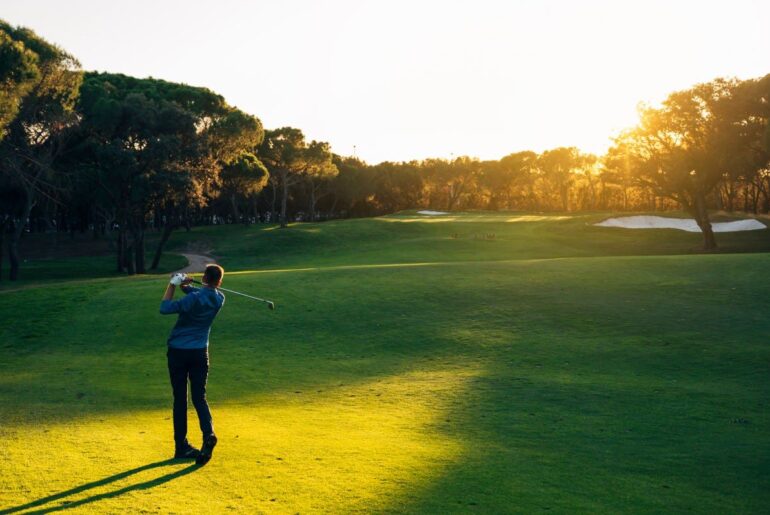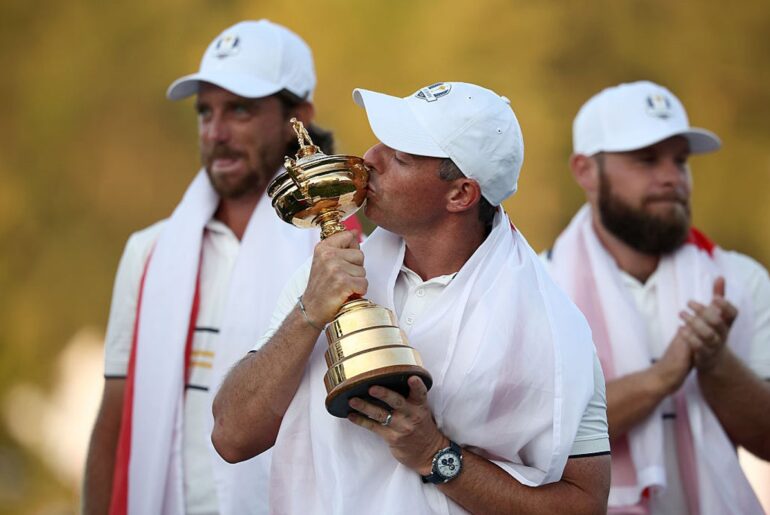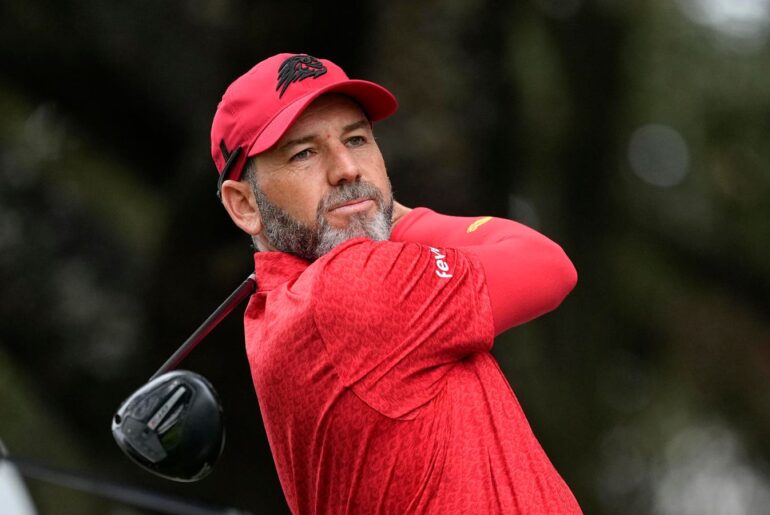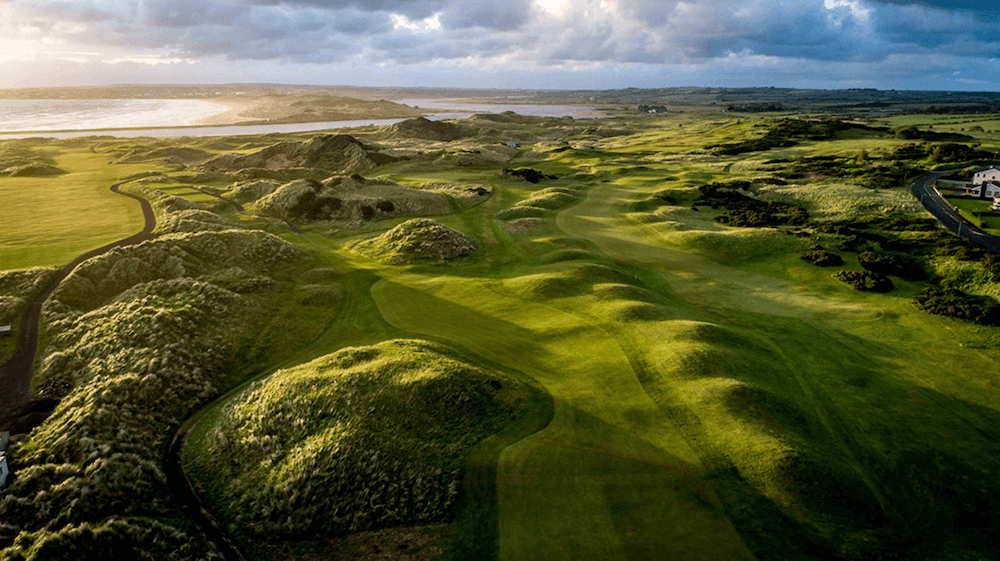 Castlerock Golf Club
Castlerock Golf Club
Editor’s note: “In Case You Missed It” is a GGP+ feature that highlights a story from Global Golf Post‘s Monday magazine.
DERRY, NORTHERN IRELAND | Looking back to 2019, it is clear that the Emerald Isle has come of age as a venue for golf majors. After all, the R&A has twice brought its Amateur Championship here during that stretch, staging the 2024 tourney at the Ballyliffin Golf Club, which boasts a pair of links tracks on the North Atlantic Ocean, five years after it had put on that same tournament at the Portmarnock Golf Club outside the capital city of Dublin.
Perhaps even more impressive has been making the Dunluce Course at Royal Portrush Golf Club a part of the Open Championship rota. And after holding that historic competition there in 2019, and watching Irishman Shane Lowry give his countrymen plenty to cheer about with his first major win, the R&A quite quickly decided to return to that seaside site for this year’s event.
That elevated profile in competitive golf is reason enough to return to Eire with my sticks. But I am also drawn by the many different ways one can enjoy a golf adventure in what is not only one of the friendliest and most beautiful places on earth but also a locale replete with great courses. And I have found after 15 trips to Ireland that there are always new places to play, new sights to see, new hotels to stay in, new pubs to patronize and perhaps best of all, new people to meet. I also love revisiting old haunts.
The place I most wanted to see on this trip was Derry, and that had nothing to do with its golf offerings (though there are a handful of courses in and around this city of roughly 85,000 people). For one thing, I wanted to check out its old city walls.
So, it was with great enthusiasm that I accepted an invitation to return here last fall with a few fellow journalists. The idea was to check out some things I had never seen before, such as the battle-scarred city of Derry and a recently opened hotel there called the Ebrington that had been receiving rave reviews for its well-appointed rooms, first-rate service and exceptional cuisine. I would also get the chance to check out the Old Links at Ballyliffin for the first time (after having played its Glashedy Links a few years ago) as well as the recently restored – and newly renamed – Jameson Golf Links at the Portmarnock Resort (which, by the way, is not affiliated with the private Portmarnock Golf Club just down the road).
In addition, I would be able to avail myself once again of the hospitality of my friend Alan Maloney at Mount Falcon – a slate-gray, stone castle in County Mayo he converted into a boutique hotel – and get in rounds on the often wind-whipped links layouts at Carne and Enniscrone.
The place I most wanted to see on this trip was Derry, and that had nothing to do with its golf offerings (though there are a handful of courses in and around this city of roughly 85,000 people). For one thing, I wanted to check out its old city walls.

Constructed in the early 17th century as a defense against settlers from England and Scotland, they remain completely intact and are among the best preserved in all of Europe. They have also never been breached, which is why Derry was long ago nicknamed the Maiden City.
Equally interesting was getting to know and understand all that went down in Derry during the Troubles, which is what the conflict that long raged between Irish Catholics and Protestants has been called. Most historians say that Derry is where the Troubles actually started, with a three-day riot in August 1969 known as the Battle of the Bogside, which is the name of a predominantly Catholic section of town. And the Bogside Massacre that took place in that same area in January 1972 – which resulted in the murder of 14 local men by British soldiers and came to be known as Bloody Sunday – is regarded as one of the darkest days in this island’s history.
I find that my favorite trips are those that allow me to delve as deeply into the history and culture of a community as the golf offerings. And spending a couple of mornings touring parts of Derry with local guides – and a couple of nights at the Ebrington, a luxury retreat quite improbably located on what once was the site of a notorious British Army barracks on the east side of the River Foyle – made for a very fulfilling visit, especially as we also worked in afternoon rounds of golf at top-100 tracks such Portstewart and Ballyliffin, all of which were mere hourlong drives away.
 The Ebrington is only a short walk from Peace Bridge.
The Ebrington is only a short walk from Peace Bridge.
One of the selling points of the Ebrington is its setting, and the hotel is part of a newly developed area with businesses, shops, restaurants and a spacious square that often offers art shows, concerts and, during my visit, a chance to go bungee jumping. The hotel also boasts easy access to the old city and is only a short walk to Peace Bridge, which spans the river, and then to Guildhall, a late-Victorian building made of red brick and topped with a copper dome.
There, we met our guide for a roughly one-mile stroll along the top of the old walls. And as we walked, he shared bits of city history while pointing out various landmarks from our vantage. He told us, for example, that the first historical references to Derry go back to the sixth century and a monastery that St. Columba founded here. In addition, the guide said, Derry withstood three significant sieges in the 17th century, the longest of which lasted 105 days. I liked how the walls in some places rose as high as 35 feet, and dipped as low as 12 feet, and that early residents entered and exited the old city through four gates, with three others being added in later years.
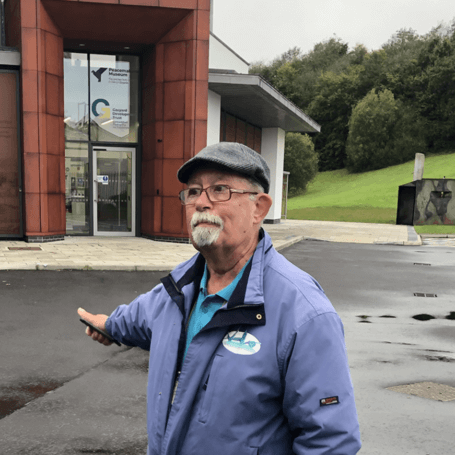 Terry Brown John Steinbreder, GGP
Terry Brown John Steinbreder, GGP
The following morning, we headed to Bogside for an illuminating but decidedly more disturbing tour because that was where Bloody Sunday took place. Our guide in this case, Terry Brown, said he was 18 years old when those killings occurred, and as he led us around, he told us stories of that infamous day that he had witnessed firsthand. Of how he knew four of the lads who were murdered, all unarmed and each one 17 years old. Of how he quickly fell to the ground when the soldiers started shooting and laid down for 20 minutes before feeling safe enough to pick himself off the asphalt and walk away.
“It was this spot, right here, where I laid,” he said, pointing to a patch of Rossville Street. “When I got up, I could see a couple of British soldiers standing over one of my dead friends. And they were laughing.”
Terry paused for a moment, and then spoke some more. “At first, the British tried to cover it up,” he said. “But even the dogs in the streets that day knew the truth, and it eventually came out.”
It became clear as we kept walking around Bogside that that truth lives on, for there are murals on the walls of many buildings memorializing those who died on Bloody Sunday and at other times during the Troubles. Equally illuminating are the well-curated exhibits in the Peacemakers Museum on Lecky Road.
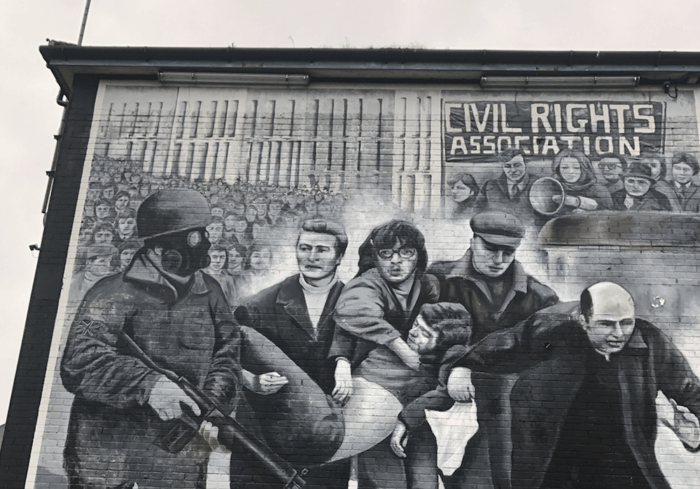 A memorial mural in Bogside to those who perished on Bloody Sunday John Steinbreder, GGP
A memorial mural in Bogside to those who perished on Bloody Sunday John Steinbreder, GGP
Taken together, that was a tough tour. But the experience was as enriching as it was gut-wrenching and helped me understand more clearly than ever before that very difficult period of time. And as we played the Mussenden Links at Castlerock Golf Club that afternoon, I appreciated how the day’s activities were nourishing my soul in very contrasting ways.
And isn’t that what travel is all about?
To be sure, it is also a matter of enjoying the fun and far less serious things a destination has to offer. And Ireland has more than its fair share of those, starting, of course, with the courses. I was able to play the sterling links at County Louth, aka Baltray, on a brisk and sunny day, reveling in the walk we took across the Tom Simpson-designed track and the variety of shots we hit as well as the hospitality of the club members who warmly greeted us at the bar after our games – and wanted to know how we liked the track. And I loved being back at Castlerock, which is set in the small oceanside town of that same name and bordered on one side by a commuter railroad line and on another by the North Atlantic.
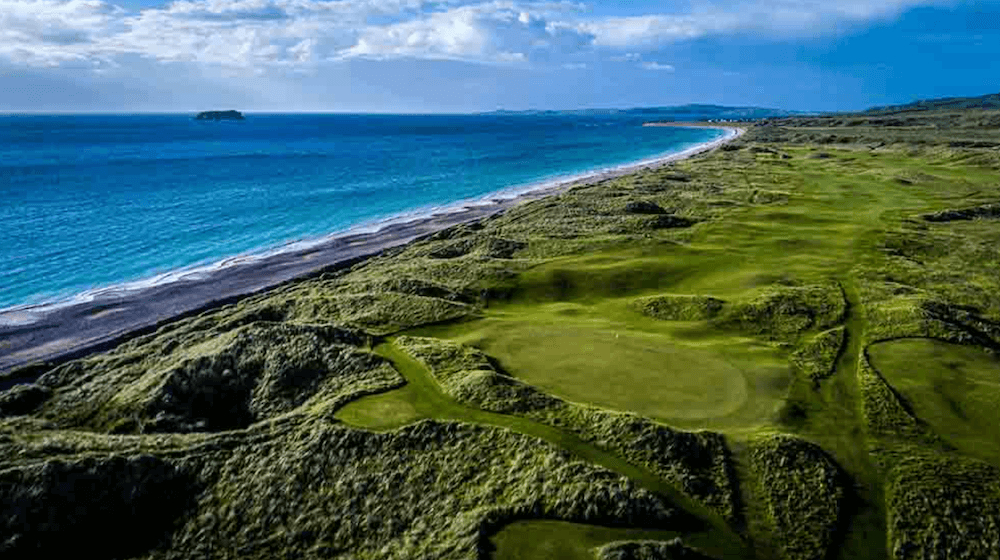 Ballyliffin
Ballyliffin
The Old Links at Ballyliffin was as good as advertised, and my reaction as soon as we finished our round was to wonder how quickly we could do that again. Alas, time did not allow for an emergency 18, so I contented myself with a makeshift Irish coffee in the bar afterwards with the club’s general manager, pouring a shot of Jameson’s whisky into a cappuccino and savoring the warmth and glow the concoction provided.
As for Carne and Enniscrone, I relished the trips through some of the purest linkslands on the planet, even if my calves were throbbing at times from trudging up and down the rugged dunes that are so much a part of both layouts.
Having the Open Championship back in Ireland this year is a great thing for golf, and I cannot wait to see who comes out on top. But I am even more excited about getting back here myself, and sampling the many things – both old and new – this land provides each time I visit.
All photos unless otherwise noted are Courtesy North & West Coast Links Golf
© 2025 Global Golf Post LLC

